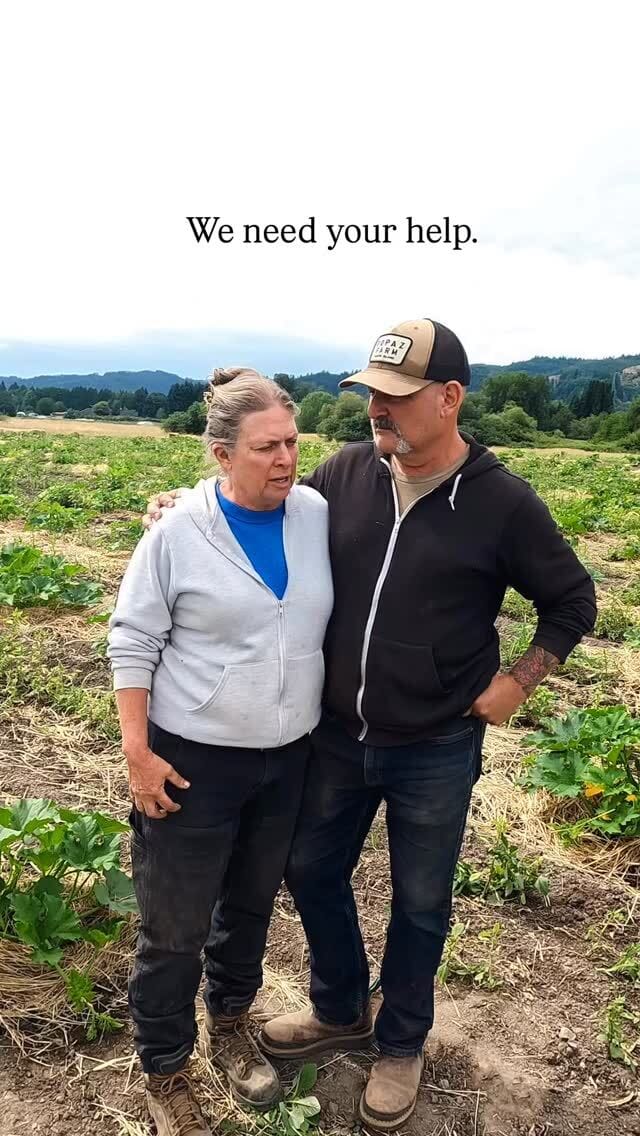UPDATE (July 25, 2025):
Following significant public outcry, the Oregon Department of Land Conservation and Development (DLCD) paused its rulemaking process for farm stands on Friday, July 25, 2025, at the direction of Gov. Tina Kotek.
The decision came after the governor's office received more than 2,850 emails and calls from farmers and residents concerned about the proposed changes.
In a statement, Kotek addressed the concerns directly:
“I want to reassure farmers who have been anxious and frustrated about how proposed changes to existing rules regarding farm stand operations may affect their businesses that I hear from you and am paying attention.”
The governor's office and the DLCD will reassess the next steps for the rule changes
If you've scrolled through Instagram lately, you might have seen posts about proposed changes to Oregon's farm stand rules. Some farms are concerned these changes could affect their operations, while state officials say they're simply trying to create clearer guidelines.
Here's what to know about the proposed rules and what they could mean for your favorite farms.
Why Now?
The story starts back in 2023, when county planners across Oregon asked the state for help. They were dealing with decades-old regulations that had created a patchwork of confusion — what flies in Washington County might get shut down in Clackamas. The Oregon Department of Land Conservation and Development (DLCD) stepped in to create statewide consistency.
The draft rules came out on July 18, 2025, and if you want to weigh in, you've got until Nov. 7, 2025. The earliest these rules could take effect would be January 2026.
Understanding Oregon's Farm Activity Categories
To understand what's at stake, you need to know that Oregon divides farm activities into three buckets.
First, there's basic farm use — no permit needed. This covers the fundamentals: growing and selling your own crops, running U-pick operations, pumpkin patches, Christmas tree farms, and offering free educational tours. If you're just selling what you grow, you're golden.
Then there are farm stands, which require a permit. These can sell products from multiple farms, host promotional events, and sell some non-farm items. Think of that charming roadside stand that sells berries from three different local farms, plus jam and farm-branded t-shirts.
Finally, there's full agritourism, which needs its own special permit. This is for the bigger stuff — concerts, weddings, large festivals, and extensive event programming.
The proposed changes? They're mainly targeting that middle category — farm stands.
What Would Actually Change?
For new farm stands, the rules would set some clear boundaries. Farm-to-table dinners would be capped at 17 per year. Educational activities would be explicitly allowed (good news for those who love farm tours). But promotional events would need to directly relate to farm products — no more craft fairs that have nothing to do with agriculture.
Sales restrictions would tighten too. Non-farm items would need a "direct relationship" to farm products. Farm logo t-shirts? Still OK. Local pottery with no connection to the farm? Probably not, according to 1,000 Friends of Oregon.
There'd also be limits on temporary structures like tents and canopies — 90 days per year, specifically for customer shelter or product sales. And every seven years, farm stands would face mandatory reviews, potentially with fees, giving local governments more enforcement authority.
For existing operations, here's the key point: these rules would only apply if farms want to expand their offerings or if they weren't properly permitted in the first place.
The Debate: Multiple Perspectives
As you might expect, not everyone sees these changes the same way.
Many farmers worry about the burden. They're concerned about costly administrative requirements, limits on how they can diversify their income, and permit fees that in some counties already run $3,000. They argue these restrictions could hamper popular activities that help farms stay financially viable.
Conservation groups like 1000 Friends of Oregon see it differently. They argue the rules protect farmland from inappropriate development, create clearer guidelines for everyone, and streamline the permitting process while ensuring farming remains the primary use of agricultural land.
Friends of Family Farmers sits somewhere in the middle. They see benefits — like clarifying educational activities and recognizing farm-to-table dinners — but worry about vague definitions, potential new approval requirements, and that seven-year review cycle.
What This Means for Portland-Area Farms
Here's the reassuring part: your favorite pumpkin patches and U-pick operations would remain largely unaffected since they're considered basic farm use. The farms most likely to feel the impact are those hosting dinners, selling products from neighboring farms, or offering various events — but again, only if they're seeking new permits or expanding.
Making Your Voice Heard
The public comment period runs until Nov. 7, 2025. If you want to weigh in, you can submit comments to DLCD through their rulemaking page, attend Rulemaking Advisory Committee meetings, or contact your state legislators.
The Bigger Picture
This debate reflects broader tensions in Oregon agriculture. How do we preserve farmland while allowing farmers to adapt to economic realities? Small farms increasingly rely on agritourism and direct sales to remain viable, yet there's legitimate concern about maintaining agricultural land for food production.
Oregon State University’s Extension Service notes successful farm stands require careful planning and can take six months just for the permitting process — these aren't casual ventures.
The proposed rules attempt to balance these competing interests, though farmers and advocates disagree on whether they've found the sweet spot.
The Bottom Line
These rules aim to replace Oregon's confusing patchwork of county-by-county regulations with consistent statewide standards. While some concerns about their impact are valid, claims that Oregon is "banning pumpkin patches" appear overstated — KGW reports that a state official called such fears part of a "misinformation campaign."
The real impacts will likely be felt most by new farms starting agritourism operations, existing farms wanting to significantly expand, and farms currently operating in regulatory gray areas.
Oregon's agricultural heritage depends on finding solutions that keep farms viable while preserving the land that makes it all possible.

Level Up Your Portland Grocery Game
While the weekly deals email is free for everyone, you’re missing out on extended coverage. Become a Stumptown Savers Club member today and gain exclusive access to insider store guides, seasonal produce tips, and in-depth strategies that help you shop smarter and eat better — all while supporting local. Join the Club for $5 a month — less than a carton of eggs.
Your membership transforms how you shop while supporting local journalism that helps all Portlanders save money. Join today!
Happy saving!
Bryan M. Vance,
Founder/Publisher,
Stumptown Savings





